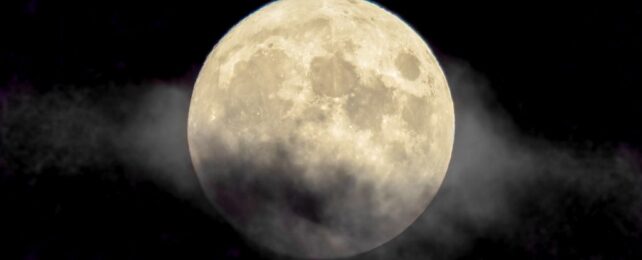 The full sturgeon Moon of August 2021, seen from Boise, Idaho. (Darwin Fan/Moment/Getty Images)
The full sturgeon Moon of August 2021, seen from Boise, Idaho. (Darwin Fan/Moment/Getty Images)
Earth's skies are about to be graced by a full Moon, plump and shining in the sky, swimming across a lake of stars like a giant sturgeon.
Okay, maybe not, but the full Moon that will rise on Friday 8 and Saturday 9 August is called the full Sturgeon Moon, the old US Farmer's Almanac name for the Moon for the late summer month of August.
This particular full Moon will arrive just in time to mess with the Perseid meteor shower, which is due to peak on August 13 – but at least when you look at it, you'll know why we call it the Sturgeon Moon.
Related: One of 2025's Best Meteor Showers Is Upon Us: Here's How to Watch
Each of the months in the year has its own Farmer's Almanac name. Each name can be just one of several, too, depending on cultural contexts and geographical locations. These can have to do with the geography of the region, agricultural calendars, and Native American customs.
The sturgeon is among the largest of the freshwater bony fish, with a lineage that can be traced back to the Jurassic. It has a cartilaginous skeleton, and its long body is armored by bony plates called scutes. They live a long time – their average lifespan is 50 to 60 years, and the largest of them can grow up to several meters in length.
It's highly prized for its meat and caviar, and can be found – among other places throughout the Northern Hemisphere – in the Great Lakes of North America. Late summer is apparently prime sturgeon fishing season in the Great Lakes, which is why August's Moon is named for it.
It's worth noting that sturgeons are more critically endangered than any other group species, and maybe ought to be left alone.
 Beluga sturgeons are the largest recorded members of the species group. (Zocha_K/E+/Getty Images)
Beluga sturgeons are the largest recorded members of the species group. (Zocha_K/E+/Getty Images)Other names for August's full Moon, according to the Farmer's Almanac, include the Flying Up Moon, from the Cree, describing young birds leaving the nest; the Mountain Shadows Moon, from the Tlingit; and several other names to do with gathering the harvest before colder weather sets in.
The full Moon is always directly opposite the side of Earth from the Sun, so look for its rise on the eastern horizon at sunset. It'll be at its fullest in the early hours of August 9, just before it sets behind the western horizon.

.jpg) 3 hours ago
1
3 hours ago
1
 English (US)
English (US)